The hydrogen fuel cells market is expected to grow from USD 2.9 billion in 2022 to USD 6.4 billion by 2032, at a CAGR of 8.3% during the forecast period 2023-2032.
Hydrogen fuel cells convert hydrogen into energy and electricity by a chemical reaction; electricity, water, and heat are by-products of this chemical reaction. As well as being used for cars, buildings, electronic devices, trucks, and backup power systems, hydrogen fuel cells can be used for a wide variety of other applications. There are numerous applications for hydrogen fuel cells, including vehicles, power plants, buildings, and other systems. They produce electricity and heat. Fuel cells offer immense advantages over combustion engines in energy storage and never need recharging as long as hydrogen is available. These fields have attracted scientists and environmentalists for many years, as they offer lower emissions compared to combustion engines.
Hydrogen fuel cell market growth is influenced primarily by environmental concerns, government initiatives to develop hydrogen fuel cell infrastructure, high initial infrastructure investment, and technological advancements. There is a strong likelihood that each of these variables will significantly impact the market for hydrogen fuel cells during the forecast period. Furthermore, increasing demand for fuel-cell electric vehicles drives the market for hydrogen fuel cells, also known as hydrogen fuel cell vehicles. Fuel cell electric vehicles (FCEVs) powered by hydrogen are called hydrogen fuel cell vehicles. Fuel cell electric vehicles' growing popularity will lead to greater demand for hydrogen fuel cells, driving the market growth.
This study comprehensively analyses the type, product type, end-user, and region. The type segment includes the water-cooled type and air-cooled type. The water-cooled type is the leading type segment. A significant portion of the HFC market is dominated by water-cooled fuel cells, which offer a more significant cooling effect. In contrast, condenser cooling can cool at higher temperatures than other types of cooling. The product type segment includes direct methanol fuel cells, polymer exchange membrane fuel cells, solid oxide fuel cells, and others. Polymer exchange membrane fuel cells are the leading product type segment. Hydrogen fuel cells with polymer exchange membranes convert chemical energy into electricity using a fuel like hydrogen. In addition to stationery, fuel cell vehicles, power generation utilities, and defense, these hydrogen fuel cells are used for various purposes. The end-user segment includes private and public. The public is the leading end-user segment. A growing number of technologies and solutions in the public domain and sector to reduce GHG emissions will lead to a larger revenue share for the public segment over the forecast period.
The market has been divided into North America, Europe, Asia-Pacific, Middle East & Africa, and South America. North America is leading the regional segment. Several government incentives and subsidies for fuel cell-based vehicles have assisted the deployment of fuel cells in North American countries, in addition to government funding and expenditure, which have influenced the use of fuel cells and hydrogen in North America.
Some notable players in the hydrogen fuel cells market are BMW Group, Intelligent Energy Holdings, Pearl Hydrogen, Panasonic, Ballard Power Systems, Plug Power, Sunrise Power, and AFC Energy.etc.
Hydrogen Fuel Cells Market Analysis and Forecast, Type
Hydrogen Fuel Cells Market Analysis and Forecast, Product Type
Hydrogen Fuel Cells Market Analysis and Forecast, End-User
Hydrogen Fuel Cells Market Analysis and Forecast, Region
Report Description:
1. Introduction
1.1. Objectives of the Study
1.2. Market Definition
1.3. Research Scope
1.4. Currency
1.5. Key Target Audience
2. Research Methodology and Assumptions
3. Executive Summary
4. Premium Insights
4.1. Porter’s Five Forces Analysis
4.2. Value Chain Analysis
4.3. Top Investment Pockets
4.3.1. Market Attractiveness Analysis by Type
4.3.2. Market Attractiveness Analysis by Product Type
4.3.3. Market Attractiveness Analysis by End-User
4.3.4. Market Attractiveness Analysis by Region
4.4. Industry Trends
5. Market Dynamics
5.1. Market Evaluation
5.2. Drivers
5.2.1. Rising environmental concerns
5.3. Restraints
5.3.1. Fluctuating raw material prices
5.4. Opportunities
5.4.1. Stringent government regulations on carbon emission
5.5. Challenges
5.5.1. High cost of hydrogen fuel cell
6. Global Hydrogen Fuel Cells Market Analysis and Forecast, By Type
6.1. Segment Overview
6.2. Water-Cooled Type
6.3. Air-Cooled Type
7. Global Hydrogen Fuel Cells Market Analysis and Forecast, By Product Type
7.1. Segment Overview
7.2. Methanol Fuel Cells
7.3. Polymer Exchange Membrane Fuel Cells
7.4. Solid Oxide Fuel Cells
7.5. Others
8. Global Hydrogen Fuel Cells Market Analysis and Forecast, By End-User
8.1. Segment Overview
8.2. Public
8.3. Private
9. Global Hydrogen Fuel Cells Market Analysis and Forecast, By Regional Analysis
9.1. Segment Overview
9.2. North America
9.2.1. U.S.
9.2.2. Canada
9.2.3. Mexico
9.3. Europe
9.3.1. Germany
9.3.2. France
9.3.3. U.K.
9.3.4. Italy
9.3.5. Spain
9.4. Asia-Pacific
9.4.1. Japan
9.4.2. China
9.4.3. India
9.5. South America
9.5.1. Brazil
9.6. Middle East and Africa
9.6.1. UAE
9.6.2. South Africa
10. Global Hydrogen Fuel Cells Market-Competitive Landscape
10.1. Overview
10.2. Market Share of Key Players in Global Hydrogen Fuel Cells Market
10.2.1. Global Company Market Share
10.2.2. North America Company Market Share
10.2.3. Europe Company Market Share
10.2.4. APAC Company Market Share
10.3. Competitive Situations and Trends
10.3.1. Product Launches and Developments
10.3.2. Partnerships, Collaborations, and Agreements
10.3.3. Mergers & Acquisitions
10.3.4. Expansions
11. Company Profiles
11.1. BMW Group
11.1.1. Business Overview
11.1.2. Company Snapshot
11.1.3. Company Market Share Analysis
11.1.4. Company Product Portfolio
11.1.5. Recent Developments
11.1.6. SWOT Analysis
11.2. Intelligent Energy Holdings
11.2.1. Business Overview
11.2.2. Company Snapshot
11.2.3. Company Market Share Analysis
11.2.4. Company Product Portfolio
11.2.5. Recent Developments
11.2.6. SWOT Analysis
11.3. Pearl Hydrogen
11.3.1. Business Overview
11.3.2. Company Snapshot
11.3.3. Company Market Share Analysis
11.3.4. Company Product Portfolio
11.3.5. Recent Developments
11.3.6. SWOT Analysis
11.4. Panasonic
11.4.1. Business Overview
11.4.2. Company Snapshot
11.4.3. Company Market Share Analysis
11.4.4. Company Product Portfolio
11.4.5. Recent Developments
11.4.6. SWOT Analysis
11.5. Ballard Power Systems
11.5.1. Business Overview
11.5.2. Company Snapshot
11.5.3. Company Market Share Analysis
11.5.4. Company Product Portfolio
11.5.5. Recent Developments
11.5.6. SWOT Analysis
11.6. Plug Power
11.6.1. Business Overview
11.6.2. Company Snapshot
11.6.3. Company Market Share Analysis
11.6.4. Company Product Portfolio
11.6.5. Recent Developments
11.6.6. SWOT Analysis
11.7. Sunrise Power
11.7.1. Business Overview
11.7.2. Company Snapshot
11.7.3. Company Market Share Analysis
11.7.4. Company Product Portfolio
11.7.5. Recent Developments
11.7.6. SWOT Analysis
11.8. AFC Energy
11.8.1. Business Overview
11.8.2. Company Snapshot
11.8.3. Company Market Share Analysis
11.8.4. Company Product Portfolio
11.8.5. Recent Developments
11.8.6. SWOT Analysis
List of Table
1. Global Hydrogen Fuel Cells Market, By Type, 2019-2032 (USD Billion)
2. Global Water-Cooled Type, Hydrogen Fuel Cells Market, By Region, 2019-2032 (USD Billion)
3. Global Air-Cooled Type, Hydrogen Fuel Cells Market, By Region, 2019-2032 (USD Billion)
4. Global Hydrogen Fuel Cells Market, By Product Type, 2019-2032 (USD Billion)
5. Global Methanol Fuel Cells, Hydrogen Fuel Cells Market, By Region, 2019-2032 (USD Billion)
6. Global Polymer Exchange Membrane Fuel Cells, Hydrogen Fuel Cells Market, By Region, 2019-2032 (USD Billion)
7. Global Solid Oxide Fuel Cells, Hydrogen Fuel Cells Market, By Region, 2019-2032 (USD Billion)
8. Global Others, Hydrogen Fuel Cells Market, By Region, 2019-2032 (USD Billion)
9. Global Hydrogen Fuel Cells Market, By End-User, 2019-2032 (USD Billion)
10. Global Public, Hydrogen Fuel Cells Market, By Region, 2019-2032 (USD Billion)
11. Global Private, Hydrogen Fuel Cells Market, By Region, 2019-2032 (USD Billion)
12. North America Hydrogen Fuel Cells Market, By Type, 2019-2032 (USD Billion)
13. North America Hydrogen Fuel Cells Market, By Product Type, 2019-2032 (USD Billion)
14. North America Hydrogen Fuel Cells Market, By End-User, 2019-2032 (USD Billion)
15. U.S. Hydrogen Fuel Cells Market, By Type, 2019-2032 (USD Billion)
16. U.S. Hydrogen Fuel Cells Market, By Product Type, 2019-2032 (USD Billion)
17. U.S. Hydrogen Fuel Cells Market, By End-User, 2019-2032 (USD Billion)
18. Canada Hydrogen Fuel Cells Market, By Type, 2019-2032 (USD Billion)
19. Canada Hydrogen Fuel Cells Market, By Product Type, 2019-2032 (USD Billion)
20. Canada Hydrogen Fuel Cells Market, By End-User, 2019-2032 (USD Billion)
21. Mexico Hydrogen Fuel Cells Market, By Type, 2019-2032 (USD Billion)
22. Mexico Hydrogen Fuel Cells Market, By Product Type, 2019-2032 (USD Billion)
23. Mexico Hydrogen Fuel Cells Market, By End-User, 2019-2032 (USD Billion)
24. Europe Hydrogen Fuel Cells Market, By Type, 2019-2032 (USD Billion)
25. Europe Hydrogen Fuel Cells Market, By Product Type, 2019-2032 (USD Billion)
26. Europe Hydrogen Fuel Cells Market, By End-User, 2019-2032 (USD Billion)
27. Germany Hydrogen Fuel Cells Market, By Type, 2019-2032 (USD Billion)
28. Germany Hydrogen Fuel Cells Market, By Product Type, 2019-2032 (USD Billion)
29. Germany Hydrogen Fuel Cells Market, By End-User, 2019-2032 (USD Billion)
30. France Hydrogen Fuel Cells Market, By Type, 2019-2032 (USD Billion)
31. France Hydrogen Fuel Cells Market, By Product Type, 2019-2032 (USD Billion)
32. France Hydrogen Fuel Cells Market, By End-User, 2019-2032 (USD Billion)
33. U.K. Hydrogen Fuel Cells Market, By Type, 2019-2032 (USD Billion)
34. U.K. Hydrogen Fuel Cells Market, By Product Type, 2019-2032 (USD Billion)
35. U.K. Hydrogen Fuel Cells Market, By End-User, 2019-2032 (USD Billion)
36. Italy Hydrogen Fuel Cells Market, By Type, 2019-2032 (USD Billion)
37. Italy Hydrogen Fuel Cells Market, By Product Type, 2019-2032 (USD Billion)
38. Italy Hydrogen Fuel Cells Market, By End-User, 2019-2032 (USD Billion)
39. Spain Hydrogen Fuel Cells Market, By Type, 2019-2032 (USD Billion)
40. Spain Hydrogen Fuel Cells Market, By Product Type, 2019-2032 (USD Billion)
41. Spain Hydrogen Fuel Cells Market, By End-User, 2019-2032 (USD Billion)
42. Asia Pacific Hydrogen Fuel Cells Market, By Type, 2019-2032 (USD Billion)
43. Asia Pacific Hydrogen Fuel Cells Market, By Product Type, 2019-2032 (USD Billion)
44. Asia Pacific Hydrogen Fuel Cells Market, By End-User, 2019-2032 (USD Billion)
45. Japan Hydrogen Fuel Cells Market, By Type, 2019-2032 (USD Billion)
46. Japan Hydrogen Fuel Cells Market, By Product Type, 2019-2032 (USD Billion)
47. Japan Hydrogen Fuel Cells Market, By End-User, 2019-2032 (USD Billion)
48. China Hydrogen Fuel Cells Market, By Type, 2019-2032 (USD Billion)
49. China Hydrogen Fuel Cells Market, By Product Type, 2019-2032 (USD Billion)
50. China Hydrogen Fuel Cells Market, By End-User, 2019-2032 (USD Billion)
51. India Hydrogen Fuel Cells Market, By Type, 2019-2032 (USD Billion)
52. India Hydrogen Fuel Cells Market, By Product Type, 2019-2032 (USD Billion)
53. India Hydrogen Fuel Cells Market, By End-User, 2019-2032 (USD Billion)
54. South America Hydrogen Fuel Cells Market, By Type, 2019-2032 (USD Billion)
55. South America Hydrogen Fuel Cells Market, By Product Type, 2019-2032 (USD Billion)
56. South America Hydrogen Fuel Cells Market, By End-User, 2019-2032 (USD Billion)
57. Brazil Hydrogen Fuel Cells Market, By Type, 2019-2032 (USD Billion)
58. Brazil Hydrogen Fuel Cells Market, By Product Type, 2019-2032 (USD Billion)
59. Brazil Hydrogen Fuel Cells Market, By End-User, 2019-2032 (USD Billion)
60. Middle East and Africa Hydrogen Fuel Cells Market, By Type, 2019-2032 (USD Billion)
61. Middle East and Africa Hydrogen Fuel Cells Market, By Product Type, 2019-2032 (USD Billion)
62. Middle East and Africa Hydrogen Fuel Cells Market, By End-User, 2019-2032 (USD Billion)
63. UAE Hydrogen Fuel Cells Market, By Type, 2019-2032 (USD Billion)
64. UAE Hydrogen Fuel Cells Market, By Product Type, 2019-2032 (USD Billion)
65. UAE Hydrogen Fuel Cells Market, By End-User, 2019-2032 (USD Billion)
66. South Africa Hydrogen Fuel Cells Market, By Type, 2019-2032 (USD Billion)
67. South Africa Hydrogen Fuel Cells Market, By Product Type, 2019-2032 (USD Billion)
68. South Africa Hydrogen Fuel Cells Market, By End-User, 2019-2032 (USD Billion)
List of Figures
1. Global Hydrogen Fuel Cells Market Segmentation
2. Global Hydrogen Fuel Cells Market: Research Methodology
3. Market Size Estimation Methodology: Bottom-Up Approach
4. Market Size Estimation Methodology: Top-Down Approach
5. Data Triangulation
6. Porter’s Five Forces Analysis
7. Value Chain Analysis
8. Global Hydrogen Fuel Cells Market Attractiveness Analysis by Type
9. Global Hydrogen Fuel Cells Market Attractiveness Analysis by Product Type
10. Global Hydrogen Fuel Cells Market Attractiveness Analysis by End-User
11. Global Hydrogen Fuel Cells Market Attractiveness Analysis by Region
12. Global Hydrogen Fuel Cells Market: Dynamics
13. Global Hydrogen Fuel Cells Market Share by Type (2023 & 2032)
14. Global Hydrogen Fuel Cells Market Share by Product Type (2023 & 2032)
15. Global Hydrogen Fuel Cells Market Share by End-User (2023 & 2032)
16. Global Hydrogen Fuel Cells Market Share by Regions (2023 & 2032)
17. Global Hydrogen Fuel Cells Market Share by Company (2022)
Market research is a method of gathering, assessing and deducing data & information about a particular market. Market research is very crucial in these days. The techniques analyze about how a product/service can be offered to the market to its end-customers, observe the impact of that product/service based on the past customer experiences, and cater their needs and demands. Owing to the successful business ventures, accurate, relevant and thorough information is the base for all the organizations because market research report/study offers specific market related data & information about the industry growth prospects, perspective of the existing customers, and the overall market scenario prevailed in past, ongoing present and developing future. It allows the stakeholders and investors to determine the probability of a business before committing substantial resources to the venture. Market research helps in solving the marketing issues challenges that a business will most likely face.
Market research is valuable because of the following reasons:
Our research report features both the aspects; qualitative and quantitative. Qualitative part provides insights about the market driving forces, potential opportunities, customer’s demands and requirement which in turn help the companies to come up with new strategies in order to survive in the long run competition. The quantitative segment offers the most credible information related to the industry. Based on the data gathering, we use to derive the market size and estimate their future growth prospects on the basis of global, region and country.
Our market research process involves with the four specific stages.

Data Collection: This stage of the market research process involves with the gathering and collecting of the market/industry related data from the sources. There are basically two types of research methods:
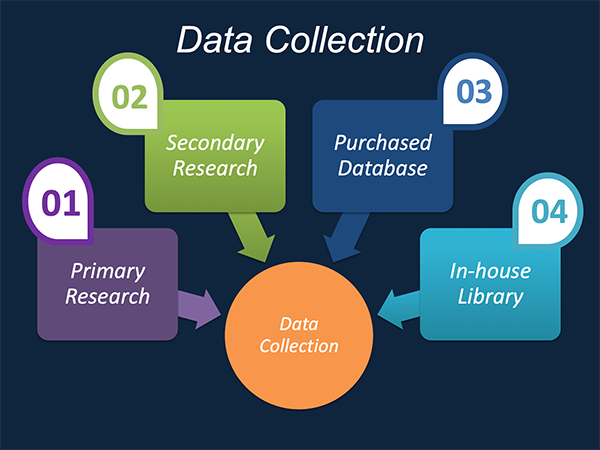
Data Synthesis: This stage includes the evaluation and assessment of all the data acquired from the primary and secondary research. It likewise includes in evaluating the information for any disparity watched while information gathering identified with the market. The data & information is gathered with consideration to the heterogeneity of sources. Scientific and statistical methods are implemented for synthesizing dissimilar information sets and provide the relevant data which is fundamental for formulating strategies. Our organization has broad involvement with information amalgamation where the information goes through different stages:


Market Formulation & Deduction: The last stage includes assigning the data & information in a suitable way in order to derive market size. Analyst reviews and domain based opinions based on holistic approach of market estimation combined with industry investigation additionally features a crucial role in this stage.
This stage includes with the finalization of the market size and numbers that we have gathered from primary and secondary research. With the data & information addition, we ensure that there is no gap in the market information. Market trend analysis is finished by our analysts by utilizing data extrapolation procedures, which give the most ideal figures to the market.
Data Validation: Validation is the most crucial step in the process. Validation & re-validation through scientifically designed technique and process that helps us finalize data-points to be used for final calculations. This stage also involves with the data triangulation process. Data triangulation generally implicates the cross validation and matching the data which has been collected from primary and secondary research methods.





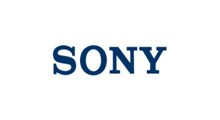

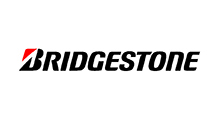

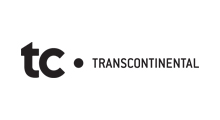















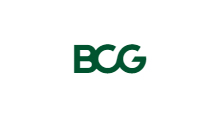


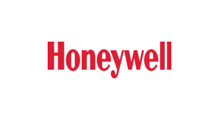

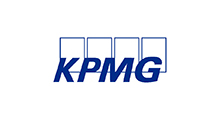
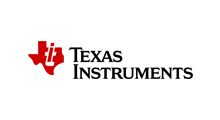



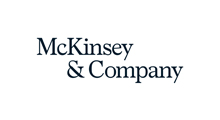

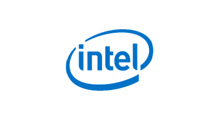







Free Customization
Countries can be added on demand
Free yearly update on purchase of Multi/Corporate User License
Companies served till date

We serve our customers 24x7 for 365 days through calls, emails and live chat options.
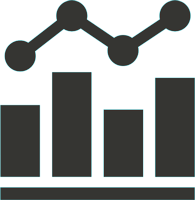
Huge database of exceptional market reports bringing market intelligence to your fingertips.

SSL enabled, we offer you various secured payment options for risk free purchase.